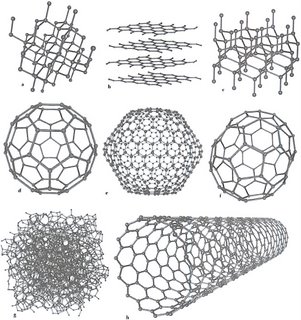On the other hand, look at Professor Klein: he is studying one of the most abstract questions of the theory of functions to determine whether on a given Riemann surface there always exists a function admitting of given singularities. What does the celebrated German geometer do? He replaces his Riemann surface by a metallic surface whose electric conductivity varies according to certain laws. He connects two of its points with the two poles of a battery. The current, says he, must pass, and the distribution of this current on the surface will define a function whose singularities will be precisely those called for by the enunciation.
It is necessary to see the stance Poincaré had in relation to Klein, and to see how this is being played out today. While I write here I see where such thinking moved from a fifth dimensional perspective, has been taken down "to two" as well as" the thinking about this metal sheet.
So I expound on the virtues of what Poincaré saw, versus what Klein himself was extrapolating according to Poincaré's views. We have results today in our theoretics that can be describe in relation. This did not take ten years of equitation's, but a single picture in relation.
Graduating the Sphere
 Imagine indeed a inductive/deductive stance to the "evolution of this space" around us. That some Klein bottle "may be" the turning of the "inside out" of our abstractness, to see nature is endowably attached to the inside, that we may fine it hard to differentiate.I give a example of this In a link below.
Imagine indeed a inductive/deductive stance to the "evolution of this space" around us. That some Klein bottle "may be" the turning of the "inside out" of our abstractness, to see nature is endowably attached to the inside, that we may fine it hard to differentiate.I give a example of this In a link below.
While I demonstrate this division between the inner and outer it is with some hope that one will be able to deduce what value is place about the difficulties such a line may be drawn on this circle that we may say how difficult indeed to separate that division from what is inside is outside. What line is before what line.
IN "liminocentric structure" such a topology change is pointed out. JohnG you may get the sense of this? All the time, a psychology is playing out, and what shall we assign these mental things when related to the sound? Related to the gravity of our situations?
You see, if I demonstrate what exists within our mental framework, what value this if it cannot be seen on the very outskirts of our being. It "cannot be measured" in how the intellect is not only part of the "sphere of our influence" but intermingles with our reason and emotive conduct. It becomes part of the very functions of the abstractness of our world, is really set in the "analogies" that sound may of been proposed here. I attach colour "later on" in how Gravity links us to our world.
I call it this for now, while we continued to "push for meaning" about the nature of space and time.
Savas Dimopoulos
Here’s an analogy to understand this: imagine that our universe is a two-dimensional pool table, which you look down on from the third spatial dimension. When the billiard balls collide on the table, they scatter into new trajectories across the surface. But we also hear the click of sound as they impact: that’s collision energy being radiated into a third dimension above and beyond the surface. In this picture, the billiard balls are like protons and neutrons, and the sound wave behaves like the graviton.
While of course I highlighted an example of the geometer in their visual capabilities, it is with nature that such examples are highlighted. Such abstractness takes on "new meaning" and settles to home, the understanding of all that will ensue.
The theorems of projective geometry are automatically valid theorems of Euclidean geometry. We say that topological geometry is more abstract than projective geometry which is turn is more abstract than Euclidean geometry.
It is of course with this understanding that "all the geometries" following from one another, that we can say that such geometries are indeed progressive. This is how I see the move to "non-euclidean" that certain principals had to be endowed in mind to see that "curvatures" not only existed in the nature of space and time, that it also is revealed in the Gaussian abstracts of arcs and such.
These are not just fixations untouched abstractors that we say they have no home in mind, yet are further expounded upon as we set to move your perceptions beyond just the paper and thought of the math alone in ones mind.
Felix Klein on intuition
It is my opinion that in teaching it is not only admissible, but absolutely necessary, to be less abstract at the start, to have constant regard to the applications, and to refer to the refinements only gradually as the student becomes able to understand them. This is, of course, nothing but a universal pedagogical principle to be observed in all mathematical instruction ....
I am led to these remarks by the consciousness of growing danger in Germany of a separation between abstract mathematical science and its scientific and technical applications. Such separation can only be deplored, for it would necessarily be followed by shallowness on the side of the applied sciences, and by isolation on the part of pure mathematics ....

Felix Christian Klein (April 25, 1849 – June 22, 1925) was a German mathematician, known for his work in group theory, function theory, non-Euclidean geometry, and on the connections between geometry and group theory. His 1872 Erlangen Program, classifying geometries by their underlying symmetry groups, was a hugely influential synthesis of much of the mathematics of the day.
See:
Inside Out
No Royal Road to Geometry?

















